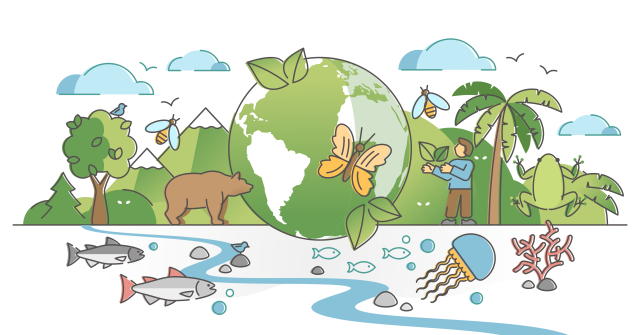Artificial intelligence and Internet of things are transforming the Agricultural industry by providing hope for greater and more reliable yields. In the United States, this technology coupled with genetically modified strains of crops promises an optimistic view to feed an ever-growing population. An idea that is often overlooked with this solution is the loss of crop biodiversity.
Over 90% of the United States’ main crops are genetically modified varying their nutritional value as well as decreasing the country’s crop biodiversity (Discovery Eye Foundation, 2015) (Calderon, 2021). The world largely looks toward the Gamo indigenous people (Ethiopian tribe) and their relationship with biological systems that have been contributing to the sustainable conservation of biodiversity (Land Income, 2022). Within these communities, they live as one with nature by treating it as part of their environment instead of the capitalist view that perceives land as a resource for short-term financial gain. These age-old systems are receiving increasing attention from the custodian bank to preserve extinct crop strains.
To learn more about this community watch the following video: https://www.globalonenessproject.org/library/films/thousand-suns
In the US it is natural that to feed a large population the main goal of farmers is to keep yields as high as possible. This is enabled by having fields filled with the same crop to ensure that the treatment of every acre is the same. This makes the process a lot simpler than growing a variety of crop strains. I like to think that with the disruptive potential of IoT coupled with AI, farmers will have the ability to tend to many crop strains simultaneously. The data received from IoT devices in the field can allow farmers to spot pests or diseases early on, and with the aid of AI, target them with the optimal solution (even autonomously). Hopefully, the simplification of the farming process will allow farmers in developed nations, such as the US, to slow the destruction of arable land and increase crop biodiversity.
Calderon, I., 2021. Graphic: Nearly all cash crops are genetically engineered now. The Counter. Available at: https://thecounter.org/cash-crops-genetically-engineered-gmo-usda/#:~:text=More%20than%2090%20percent%20of,Midwest%20Center%20for%20Investigative%20Reporting. [Accessed September 23, 2022].
Discovery Eye Foundation, 2015. GMO and the Nutritional Content of Food. Discovery Eye. Available at: https://discoveryeye.org/gmo-and-nutritional-content-of-food/ [Accessed September 24, 2022].
Land Income, 2022. 5 automation technologies that improve agricultural returns. Land Income. Available at: https://landincome.com/blog/5-automation-technologies-that-improve-agricultural-returns [Accessed September 26, 2022].

